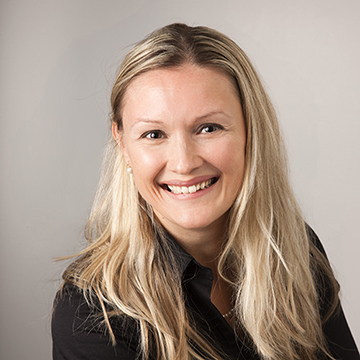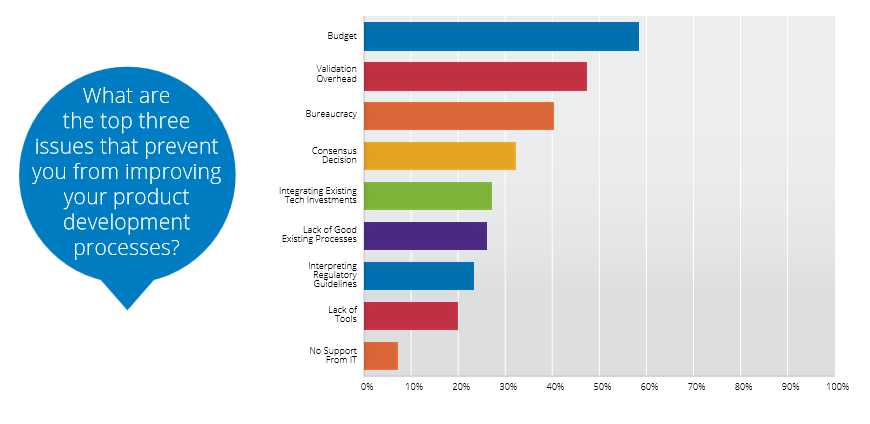An interesting and effective approach in the entrepreneurial world known as the “Painted Picture” method is used to plan a three to five year vision for a company. Whether service or product-based, large or small, early stage or planning growth, this exercise has proven valuable. Our executive team includes the Painted Picture exercise as part their annual planning process.
The spirit of this approach equally applies to program planning. The exact steps to achieving the vision will vary as the project unfolds, but thinking hard about the big pieces and what shape they will take is a useful exercise to start things off. Then keep those big puzzle pieces in the forefront as the project unfolds, and you will naturally steer toward them. In the words of our company president, “It’s amazing how many of the goals we set out for ourselves five years ago have come true in some form or another.”
I’m the project management officer of a medical device design and development firm with clients throughout North America. One of the most frequently requested services in a development project is program planning. Typically we are asked early in a project engagement, “How much and how long?”; these key pieces of information are critical to our clients’ ability to frame a business around a new product or technology vision.
Different from a project plan or charter, a program outline looks at the long-term, full development and commercialization cycle and in many cases includes manufacturing transfer at projected volumes. Often we undertake this planning exercise during early stage development, when the development team is actively de-risking the technology and addressing integration challenges, regulatory consultants are understanding the Intended Use and Essential Performance requirements, and business stakeholders are structuring the business case for the product. It all sounds a bit early to answer the question, “How much and how long?”
Experience tells us that it is entirely possible. A recent project endeavor prompted me to reflect on how we approach effective and realizable program planning for our medical device development.
Program Planning is a Team Effort
The goal is to develop a realistic and realizable plan. The role of the planner is to aggregate information and hold the vision for the development path. It is essential to involve key members of the team who represent core aspects of the program in the planning exercise. Generally, this includes conferring with senior development engineers within the various functional groups, as well as regulatory consultation. Buy-in from the team is paramount to a successful plan and for this, you must ensure that feedback from team members is heard and incorporated.
Capture Ideas
A blank spreadsheet or Work Breakdown Structure template is perhaps the least inspiring place to start. Frankly, you are better off with a blank piece of real, white paper. Use tools like Mind Map or host a sticky-note brainstorming (I like this How-to blog for instructions) to generate ideas and build on the ones you already know. Coach team members and remind yourself to think broadly about known or foreseeable risks and potential mitigations in the commercialization path. Identifying risks will steer the team toward thinking of the critical path. Look deeper at the drivers and pulleys for critical path activities to challenge your assumptions. Prioritize, categorize and organize all these ideas before limiting yourself to a linear column of activities, dependencies and durations.
Break It Down into Parts
A successful program must be segmented into well-defined, achievable steps. This is the time to migrate puzzle pieces into something more rigid like an Excel template or Gantt software. There are loads of free options, such as ProjectLibre or Gantt Project. Our company commercialization process divides development into phases, where for example, Phase 0 addresses early proof-of-concept and prototyping to de-risk technologies, understand the product requirements, and ensure critical specifications are achievable. Take a peek at our recent guest blog written by Michael Baker on Due North’s Sketch to Launch approach, which includes insights and from this well-known, industry veteran. Whichever approach suits your program, it will need to align with your design control process and be clearly outlined in the device design plan.
Know Your Milestones
Even within a phase, we often divide into several bodies of work to ensure we address risks incrementally, hit achievable milestones, and pause to evaluate the program baseline at appropriate intervals. Write down your achievement assumptions for each body of work. Decide on your measures of success and progress up front and include those within the program outline. These could be specific technology risks resolved, feasibility reports with go/no-go decisions, design reviews, evolutions of a prototype, sub-system development parts coming together for integration, or a clinical trial.
Use What You Know
Historical data can be an incredibly valuable tool in program planning. Simply reflecting back on projects of a similar complexity as a top-down approach to estimates in cost and timeline is a good reality check. As a medical device design and development firm, we have the unique benefit of having supported many projects over the past years, though it is entirely understandable that new companies and pursuits would have more limited reference data. This is where you will need to get creative, build industry alliances, expand your network and be open to sharing within the medical device and product development community. LinkedIn forums, conferences, and simply extending an interest to connect are all effective ways to glean industry knowledge.
It Doesn’t Have to Be Perfect
The details are important, but they do not need to be perfect. Finding the right level of detail depends on the complexity of the device and residual uncertainty in the core technology. Spend time thinking hard and writing down the risks and assumptions in your plan. Follow threads of thinking, what-ifs, and test them against your outline. Does it still reasonably fit within the blocks you mapped out? If the answer is yes, then you have about the right granularity with some flexibility to work with the unexpected. It may unfold differently, but your Painted Picture will be sure to help guide you through the next three to five years.
I would love to hear reader stories in program planning. Please share!









